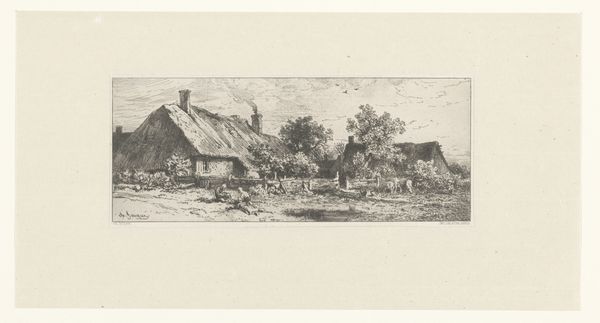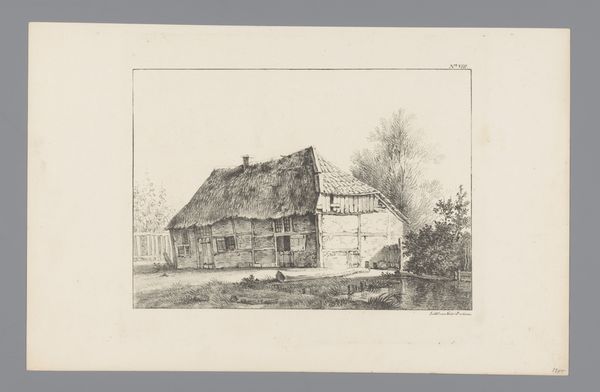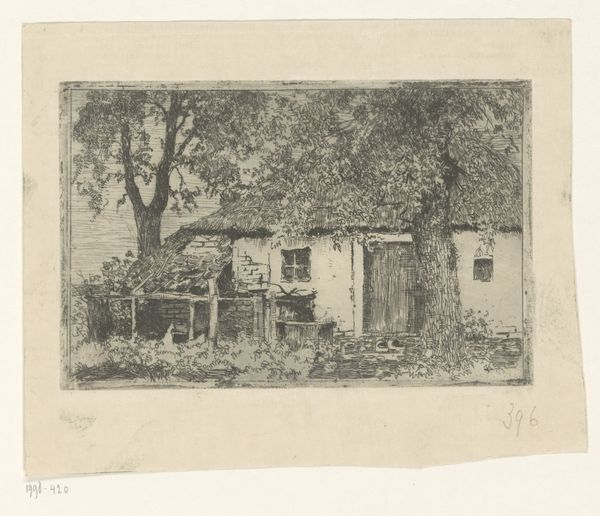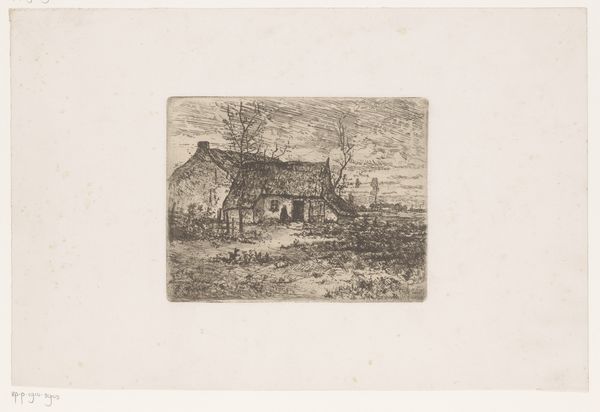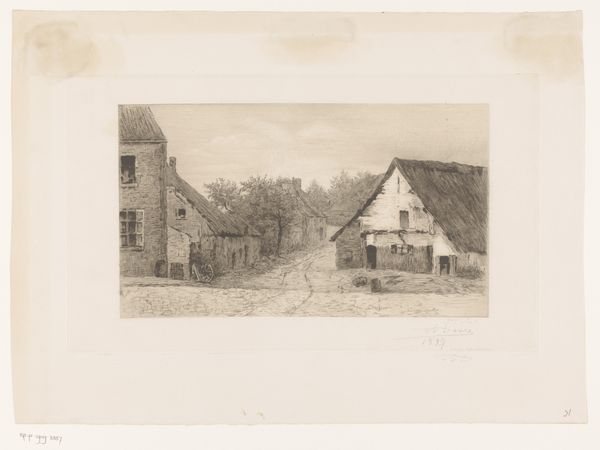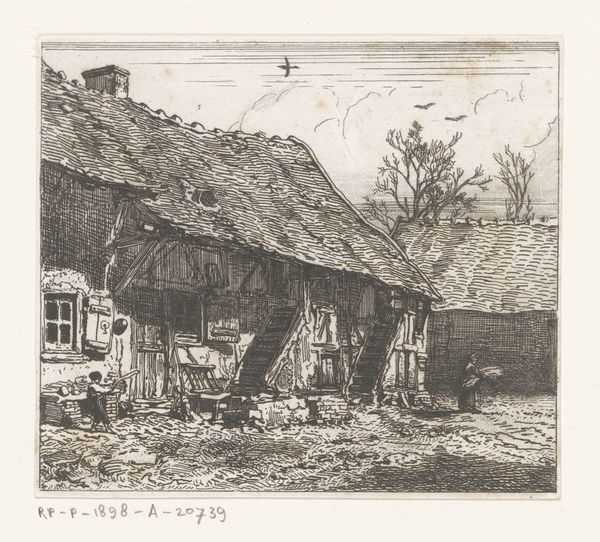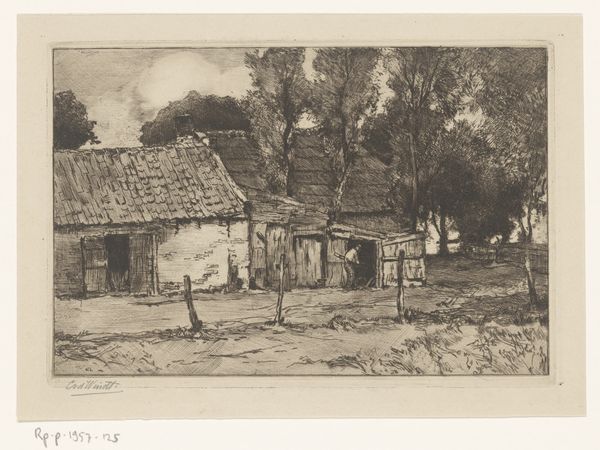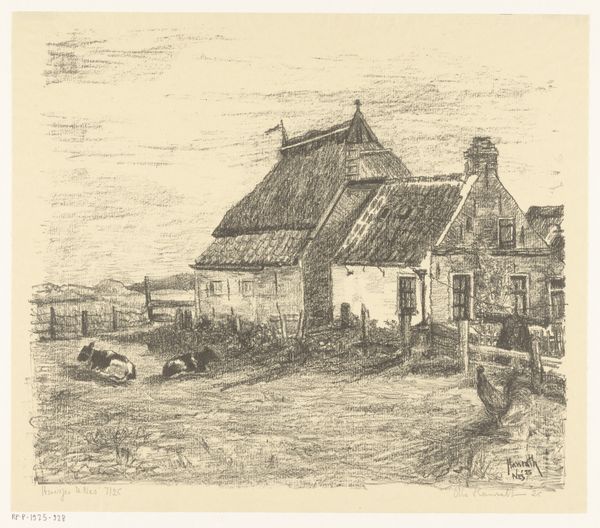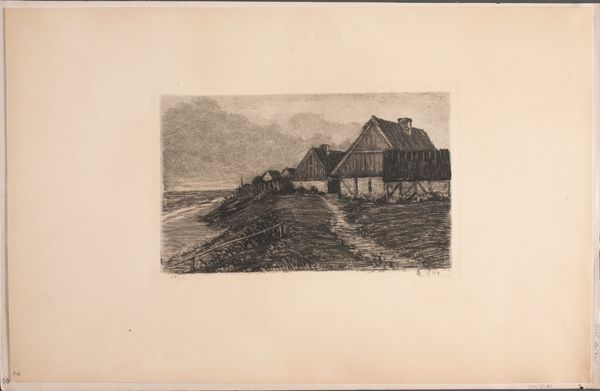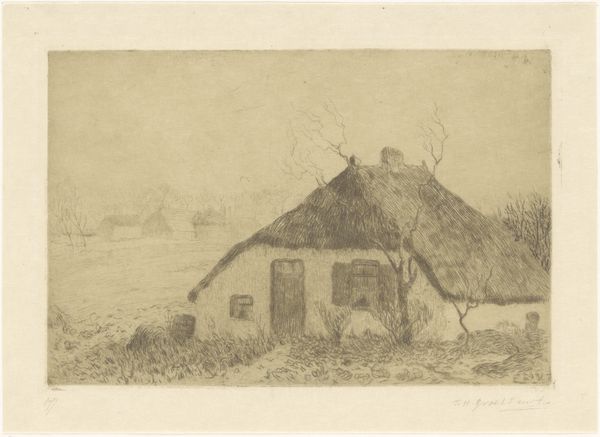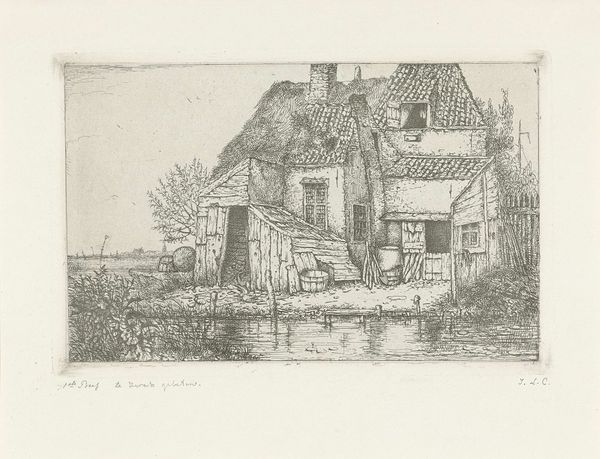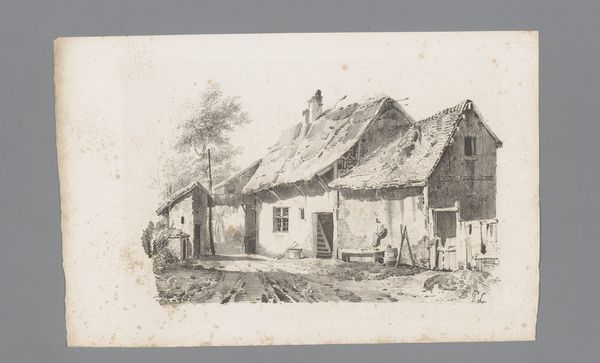
print, etching
# print
#
etching
#
old engraving style
#
landscape
#
realism
Dimensions: height 170 mm, width 265 mm
Copyright: Rijks Museum: Open Domain
Curator: Welcome! Here at the Rijksmuseum, we're looking at Carel Nicolaas Storm van 's-Gravesande's "Boerderij in Buggenhout," a print etched sometime between 1871 and 1873. Editor: The image whispers of rural calm, doesn’t it? I see a humble farmhouse rendered in meticulous detail, but there's a certain sadness clinging to it, like the dampness of the earth after rain. Curator: Absolutely. Notice the etcher's commitment to representing everyday life—the textures of the thatched roof, the rough-hewn timbers, the meticulously depicted figure tending to the fields. These details reveal much about the material conditions of rural communities in the 19th century. Editor: And that labor! It feels heavy, ingrained. The lone figure could be anyone, part of this never-ending cycle with the land, but they seem very far off and lonely. Is it just me, or is there almost an infinite horizon in this very domestic composition? Curator: The choice of etching, a printmaking technique reliant on laborious processes of acid and metal, elevates a commonplace subject—a farmhouse—into the realm of fine art. The artist is transforming what could be seen as mundane labor into a delicate work of art. Editor: So true. The line work, delicate but insistent, transforms this farmhouse, this life, into something timeless and strangely ethereal. A fleeting moment captured in… corrosive materials! There is a beauty in that paradox. Curator: And remember the etching's creation occurred amid shifting attitudes towards the representation of labor and rural life. Artists began turning their attention towards more realistic subjects, capturing ordinary lives of laborers rather than idealized classical or historical scenes. Editor: Makes you think about all the unseen labor behind both the making and the living within this image. Every line etched on that plate, and every bale of hay tossed. There's a silent story being told. A beautiful silence, I might add. Curator: It is remarkable how van 's-Gravesande’s print engages these different types of manual work simultaneously, while reminding us how artistry shapes perceptions. It really makes you consider the socio-economic currents underlying artistic creation, doesn’t it? Editor: Indeed! All this from what seems like a quiet scene. Funny how art can whisper so loudly when you really listen. Curator: I hope this has encouraged a deeper appreciation for the ways in which the artist captures and reflects these changing social attitudes.
Comments
No comments
Be the first to comment and join the conversation on the ultimate creative platform.
